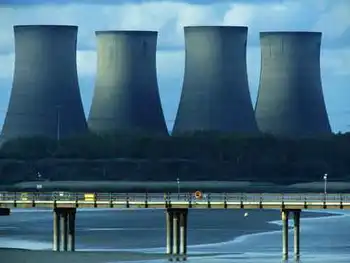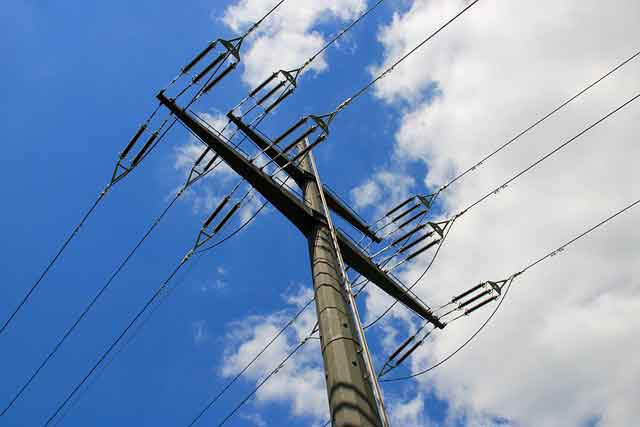Hydro hike here to stay
TORONTO, ONTARIO - Ontario families already grappling with $1-a-litre at the pumps and higher natural gas prices are about to get squeezed again, this time on their electricity bill.
Last year's blistering hot summer and the rising cost of powering the province means Toronto households will be paying an average of 5.8 per cent or $81 more over the next year to keep the lights on and air conditioners humming under new rates, effective May 1, unveiled recently by the Ontario Energy Board.
Toronto got off relatively easy. The impact on homeowners bills will vary wildly across the province, depending on what local utilities charge to deliver power. For customers of some of Ontario's 90 utilities, increases could amount to $200 or more per year.
With increases to natural gas, oil and electricity prices, higher energy costs are sending shockwaves through the economy, affecting everything from the groceries we buy to air travel.
But the Ontario government says help for low-income families is on the way. It introduced legislation that aims to provide $100 million in assistance to nearly 1.5 million low-income families hurt most the rate hikes.
The plan would offer a one-time rebate of up to $120 per family, and $60 per individual, based on a sliding scale according to income. The rebates will be in people's pockets by October or November, officials said.
Premier Dalton McGuinty, speaking in the Legislature recently, said those who are financially able should get used to the idea of higher energy prices.
"We think that all of us, our generation, should pay for the actual cost of electricity that we're buying. We think it's wrong to pass that cost down to our children or our grandchildren, as (previous) governments did," he said.
"It's not necessarily an easy thing to do, but I'm confident and comfortable with the notion Ontarians will support us on this."
The different rate increases in Ontario stem from the cost of distribution, which is set by individual utilities.
On the low end, residential customers of Orangeville Hydro Ltd. who use an average of 1,000 kilowatt-hours each month will pay only $47 more this year, while a little to the east comparable bills of Grand Valley Energy Inc. customers will swell by a painful $242. The hike for Hydro One customers, who are primarily rural, will average $191.
The regulator blamed a record-hot summer last year for the hikes.
Lower water levels for hydro-electric generation and more frequent use of air conditioners forced the province to import premium power and use electricity generated by natural-gas plants, for which the cost rose far higher than forecast.
The result was that Ontario households paid $60 less than the actual cost of supplying the electricity, amounting to a $384 million shortfall that will be made up by the new rates.
While rates are increasing, that doesn't mean people's bills have to, said Energy Minister Donna Cansfield.
"The less you use, the less you pay," said Cansfield, who unveiled a program Tuesday that will offer rebates toward the purchase of high-efficiency central air conditioners or the maintenance of old ones.
"If you've got curtains, draw them; if you've got blinds, pull them down; if you've got an air conditioner, turn it up a couple of degrees. You'll never even notice that difference but overall the demand would be significantly lowered," she said. "What people need to do is change their behaviour about how they've used or viewed electricity."
Environmental groups said the hikes would help encourage people to reduce their electricity use, but criticized the government for not doing enough to promote conservation.
NDP Leader Howard Hampton said the government's approach to curbing demand has been an afterthought and not a central focus of its strategy.
"The whole McGuinty energy scheme is wrong. It would be far less expensive and better for the environment if the McGuinty government had started by investing in energy efficiency and conservation," Hampton said.
"California has saved the equivalent of three Darlington-size nuclear plants by investing in energy efficiency. You cannot build a home or an apartment building or an office in California that isn't energy efficient. It's against the law."
Conservative Leader John Tory accused the McGuinty government of mismanaging the energy file, claiming that electricity rates have gone up 55 per cent since the provincial Liberals came to power.
Prices will also vary according to how much power a household uses.
Residential supply rates will jump to 5.8 cents from 5 cents per kilowatt-hour for the first 600 kilowatt-hours used between May and October. Households that use more than 600 kilowatt-hours will see the rate jump to 6.7 cents from 5.8 cents.
In the winter — between November and April — the threshhold is 1,000 kilowatt-hours, largely because homes dependent on electric heating have less flexibility in reducing their power consumption.
Marika Hare, managing director of policy development with the energy regulator, said it's possible that lower-than-expected natural gas prices, a cool summer and any impact of conservation efforts could lead to a reduction in prices in the fall.
But Don MacKinnon, president of the Power Workers' Union representing coal workers, said consumers should prepare for even higher prices because of the government's plan to shut coal plants and replace them in the short term with natural gas power.
"Without reliable back-up generation in place, Ontario residents and businesses will be hit again and again with price hikes," said MacKinnon.
Related News

Can Europe's atomic reactors bridge the gap to an emissions-free future?
PARIS - Shaken by the loss of Russian natural gas since the invasion of Ukraine, European countries are questioning whether they can extend the lives of their ageing nuclear reactors to maintain the supply of affordable, carbon-free electricity — but national regulators, companies and governments disagree on how long the atomic plants can be safely kept running.
Europe avoided large-scale blackouts last winter despite losing its largest supplier of natural gas, but industry is still grappling with high electricity prices and concerns about supply.
Given warnings from the International Energy Agency that the coming winters will be particularly at risk from a…




